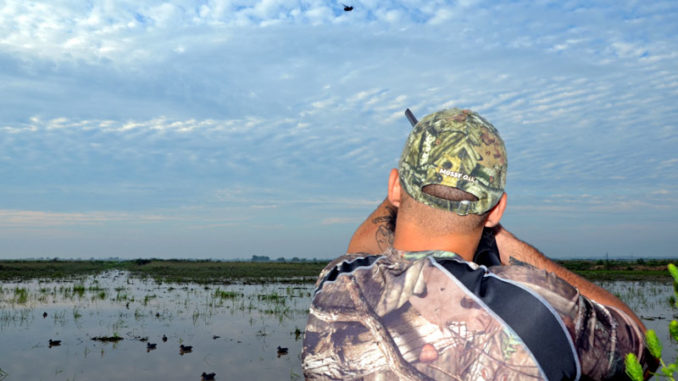
Louisiana hunters get a big percentage of hot weather teal migration
Already sweating from the humid September heat, we crouched in tall reeds on a low levee bordering a flooded patch of agricultural land waiting for shooting hours to begin. A thin ribbon of pink marked the eastern horizon across the flat soggy field.
Vague twisting and darting silhouettes rocketed past us just over the reeds before vanishing into the enveloping blackness. Moments later, what sounded like a squadron of miniature jet fighters roared over us, followed by splashing as something crash-landed in the pothole. Soon, the muffled rumbling of distant gunfire announced the start of shooting hours and new season afield on this magnificent September morn.
For many waterfowlers, the September teal season offers a tune-up before the real action begins in November. A harbinger of fall, blue-winged teal migrate much earlier than most other ducks, sometimes arriving on the Gulf Coast by late August.
Big percentage
To increase the harvest of blue-winged teal, the U.S. Fish and Wildlife Service allows some states to hold a September season. The 2023 Louisiana season opens on Friday, Sept. 15, and runs through Saturday, Sept. 30. In Mississippi, sportsmen can hunt teal from Sept. 9-24. In each state, sportsmen can bag up to six teal per day in any combination of blue-wings, green-wings or cinnamon teal.
“About 45 percent of the September blue-winged teal harvest in the Mississippi Flyway occurs in Louisiana,” said Jason Olszak the Louisiana Department of Wildlife & Fisheries Waterfowl Program Manager in Lafayette. “About 23 percent of all teal shot in the nation during September occur in Louisiana. Our peak teal migration in Louisiana occurs in late September so we always try to get the latest dates we can for teal season.”
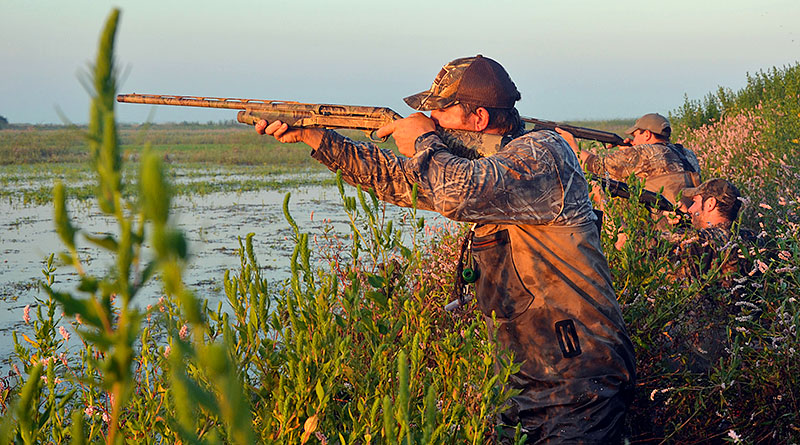
Louisiana sportsmen should enjoy a good teal season this year. Nesting conditions on the prairies of North Dakota, Saskatchewan and Manitoba where most Mississippi Flyway blue-winged teal breed looked about average or slightly better this year. The blue-wing population stayed above the long-term average for years. Green-wing numbers trended upward for most of the past two decades and remain above the long-term average.
“Some hunters bag blue-winged teal in January, but the majority of the birds pass through in September and head farther south,” said Houston Havens, the Mississippi Department of Wildlife, Fisheries & Parks Waterfowl Program Coordinator. “They will at least go to the Gulf Coast, but might continue to Mexico, Central or South America.”
“The green-winged teal population has been above the long-term average for the past several years,” Havens said. “North Dakota had a tremendous increase in the population of green-winged teal this year. Hunters just need to be in the right spot at the right time.”
During September, green-wings normally account for less than five percent of the harvest. Neither Louisiana nor Mississippi holds significant numbers of cinnamon teal, primarily a western bird. Sportsmen can legally shoot them in either state during September.
Successful sportsmen frequently scout to keep up with the birds. Conditions can change rapidly. Birds found on Saturday might disappear by Sunday. A hard rain could turn a dry field into a teal paradise overnight. The small birds don’t need much water to land and feed. The dabblers like water three to 12 inches deep. They root around the bottom and grab seeds, small invertebrates or other morsels to eat.
“Teal don’t like confined habitats,” Olszak said. “People won’t find them in flooded timber. They like shallow, open water. Harvested agricultural fields with just sheet water or shallow impoundments make good places to hunt teal.”
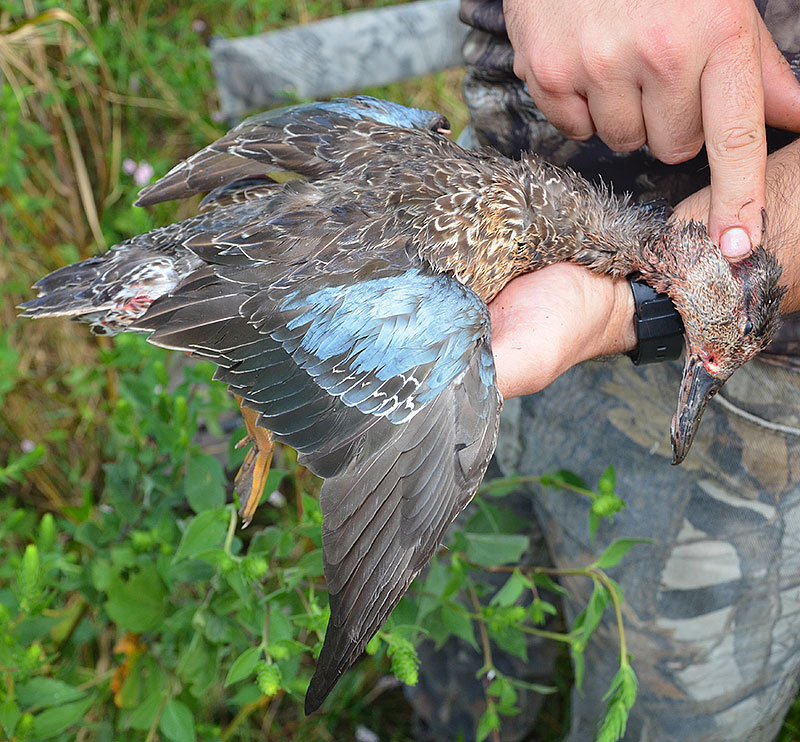
Twitter and dive bomb
The swift birds habitually fly at first light. Fast and low just over the grass tops, they zoom where they want to go and simply drop out of the sky to crash-land wherever they like. Even the most experienced waterfowlers might not see them coming. Sometimes, teal seemingly materialize and suddenly appear swimming in the decoys. In a great spot, skilled shooters could head home with limits even before the sun breaks the horizon.
“Teal don’t really circle,” said Jeff Dauzat of Fin and Feather Guide Service (504-818-2176, finandfeatherguides.com) who hunts the Mississippi River delta marshes. “They twitter along over the marsh, see the decoys and dive-bomb in. It’s not like trying to work mallards that circle and circle and never commit.”
Since teal know where they want to go, many sportsmen don’t even bother with blinds. They just hide in any natural cover. If birds keep landing on the far side of the pond or the next pond over, quickly grab the gear, a couple decoys and hide at the other spot if that’s where teal already want to go.
Sportsmen don’t need huge decoy spreads to bag teal either. Young inexperienced birds making their first migration south might just need to see movement. Sometimes, just one or two spinning wing decoys with nothing else will bring in the birds. Other mechanical decoys disrupt the surface. A jerk cord system also creates movement to help bring in the birds.
In September, ducks do not yet sport their vibrant breeding plumage, so leave the bright green heads home. Many teal hunters only use hen teal decoys, but truthfully, species doesn’t matter. Birds see the small size better than colors.
“All of the birds lack color in September,” Olszak said. “Blue-wings have that bright blue wing patch, which is an excellent field mark in flight. A shoveler also shows blue wing patches. Look for the big spoon-shaped bill.”
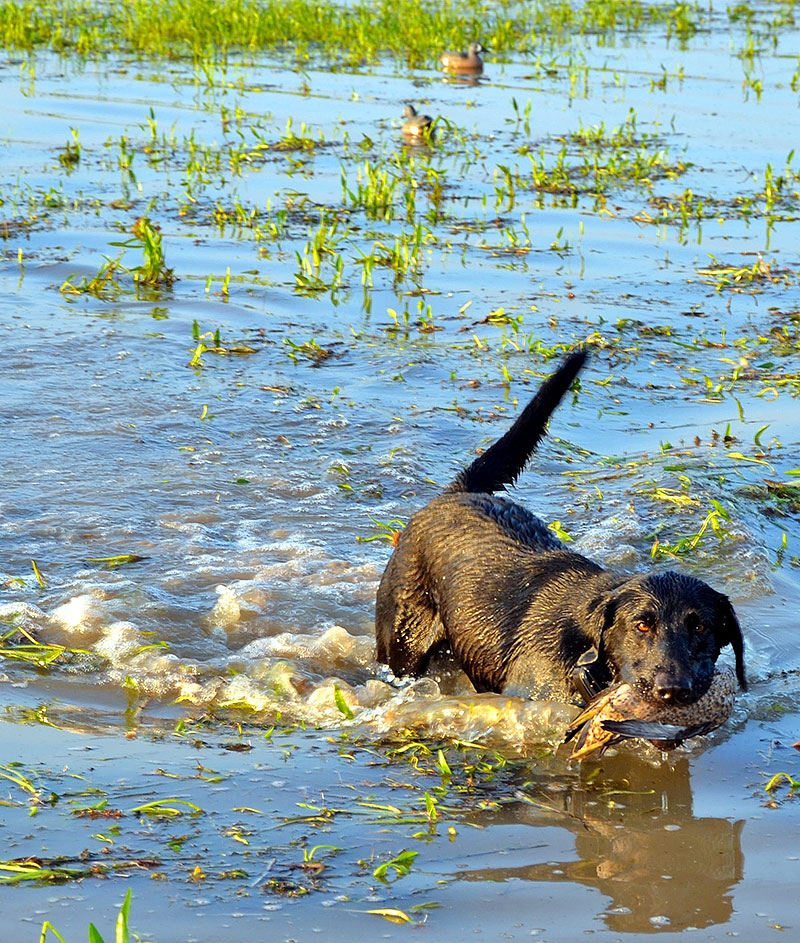
Mottled ducks live in coastal marshes all year long and usually travel in pairs. Not legal in September, these birds seem to enjoy landing in decoy spreads or flying enticingly low over hidden hunters during teal season, something they rarely do during the regular season.
In an area with mottled ducks, place a pair of mallard hen decoys a short distance from the shoreline to make them more visible. Perhaps add another pair at extreme shooting range in the other direction. These make great confidence builders and shooting marks.
Since all ducks look drab in September, identifying small feathered speedsters, during early morning low-light conditions presents a significant challenge. In milliseconds, sportsmen must spot fast-moving birds, identify the species and decide whether to shoot or not.
Besides teal, mottled ducks and shovelers, sportsmen hunting in September might also see wood ducks near the timbered areas. Woodies stay in Louisiana all year long. Sportsmen might also spot black-bellied and fulvous whistling ducks. These ducks breed in the southern United States and winter in Mexico or parts farther south.
They just show up
Teal hunters don’t need to do much calling either. Teal make a nasally, high pitched sound, not boisterous quacking like a mallard hen. Call just enough to make the birds look at the decoys or don’t call at all.
“In some places, people don’t even have to call because teal already want to come in and they’ll just show up,” said Canaan Heard with Faulk’s Game Calls (337-436-9726, www.faulkcalls.com ) in Lake Charles. “If birds don’t want to go there, they won’t go there. Hit a few notes and then stop. If the teal turn toward the decoys, stop calling altogether.”
Louisiana sportsmen generally find the most teal in the southwestern rice fields and coastal marshes. Teal prefer fresh to intermediate marshes rather than salty ones so river deltas also make great places to look for teal.
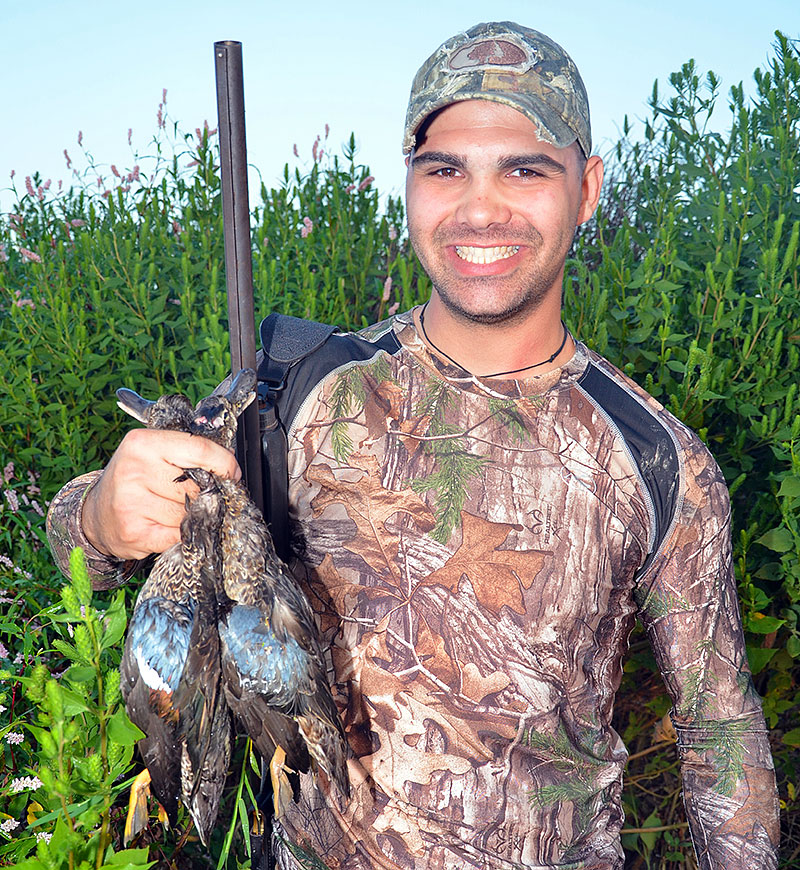
“A big aspect of teal hunting is rice,” Olszak said. “Much depends upon how the rice harvest goes and water conditions leading into the September season. In our September surveys, about 80 percent of the teal we count are in southwestern Louisiana. The southeastern Louisiana marshes are always good too. All of the coastal national wildlife refuges with fresh to intermediate marshes typically hold teal.”
Olszak specifically recommended Pointe-aux-Chenes WMA in Lafourche and Terrebonne parishes and Pass-a-Loutre WMA in Plaquemines Parish as teal hotspots. Sabine and Lacassine NWRs in southwest Louisiana also offer good waterfowl action. Teal hunting in north Louisiana depends heavily upon rainfall unless farmers pump water into harvested rice fields.
“Catahoula Lake is always a good area to hunt,” Olszak said. “Russell Sage is another good area to hunt. It includes Wham Brake and the Pintail Alley bordered by agricultural land. Boeuf WMA is another good one. Some of the Avoyelles Parish areas can produce good teal numbers as well as the reservoirs along the Red River.”
In Mississippi, Havens recommends Muscadine Farms and Howard Miller WMAs. He also said people can bag teal on some larger lakes. People can also hunt the river backwaters and oxbows.
“Hunters often do pretty well on Muscadine Farms and Howard Miller,” Havens said. “Hunter success on the large lakes depends upon water levels. When water levels drop to mudflat habitat, blue-winged teal get into those shallow backwater areas. On the coast, people who find some shallow water with sparse, scattered vegetation in some of the bays should find teal.”
Do the scouting and dress for the season. Carry lots of insect repellent and shoot open chokes for decoying birds. In the right spot, sportsmen could enjoy a magical September morn, hot or not.